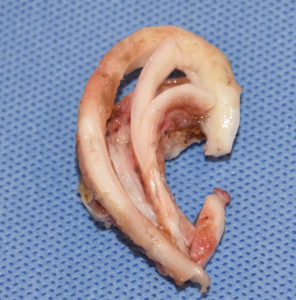The ear is composed of two basic structures, cartilage and skin. The cartilage component of the ear is considerable as only the earlobe is not supported by it. The cartilage is solely responsible for the very complex shape of the ear with its many hills, valleys, ridges and curves that are seen externally. How it gets this shape is an embryological marvel as six hillocks fuse in utero to ultimately create what we see as the external ear.
While cartilage supports all the convexities and concavities of the ear, its most important contribution is to its elevations or convexities. (helical rim, superior and inferior crus, antihelix, tragus and antitragus) Cartilage can be removed from any of the concave areas and the shape of the ear would not change. This is well known from the common harvesting of ear cartilage in rhinoplasty from the concha, the largest ear concavity which looks the same both before and after graft harvest.

Of all the shaping procedures that are done in plastic surgery throughout the body, making an ear out of rib cartilage in microtia reconstruction certainly qualifies as a sculpting surgery.
Dr. Barry Eppley
Indianapolis, Indiana


